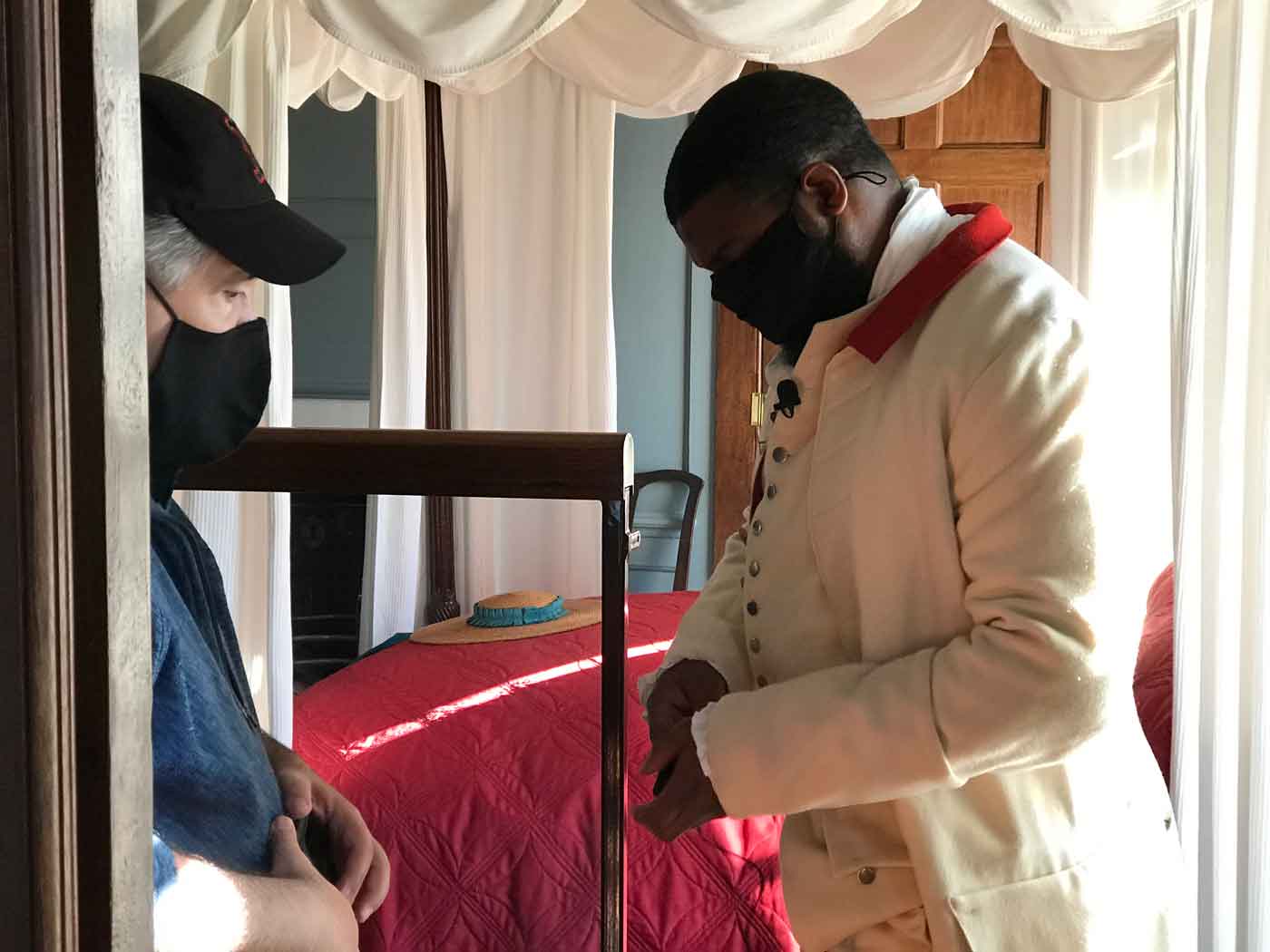Our Lives, Our Stories: Legacy of the Randolph Site Part 1: What is a life, what is it to have your story told?
The famous French architect Le Corbusier once said “The house is a machine for living in.” Going into this 360-degree tour I had a very different vision of what we were going to do. In previous tours we focused on the ‘machine,’ the space of the building as the story. This time I wanted to focus on the ‘living’ part of Le Corbusier’s famous quote; the lives of the individuals would comprise the story and the framework of the tour. We were at a stage now, with multiple tours under our belt, to take this tour to the next level.

The Randolph site needs to be seen as a site of memory, reflecting the lives of the many people who lived here. Yet sometimes, a big name can overshadow all others. So it is with the name “Peyton Randolph.” The fame of one individual has the potential to overshadow the lives of all the other people who also lived, worked, and died in this place. How do we know there were more people here beyond the Randolphs? Like many wealthy individuals in the 18th century, when Peyton Randolph died in 1775 an inventory was made of all of his valuables. Because enslaved human beings at the time were considered property, they were inventoried too. This distressing fact had the unintended benefit of recording for posterity the names of the other people living on the property. In all, there are 27 individuals named on the list, all of whom were enslaved by the Randolphs. Historians have been able to scour other historical resources to uncover more information about each of these people, their lives, and their humanity.

So it was that we had the names and histories of 27 people. Some of their stories are long and some short, but few are told. This tour refocused the way we explore the site from an emphasis on the building to an emphasis on the lives of the people of this site, the place where they lived and worked. As you move through the tour you will see that Black hands were at work in every room, in every space. We wanted to ensure their voices could also be heard and that they could tell their own stories, a simple, human right that wasn’t accorded to them during their lives. At Colonial Williamsburg, we are fortunate to have a talented group of actors in the Museum Theatre department that provide first person portrayals of some of these individuals. Our actors were able to embody the people they portray, and even though the words they speak are not literal, they reflect the feelings those who lived here likely would have had. Scripts had been written based on evidence derived from research into the circumstances in the household, recollections and writings of other enslaved people, and primary source writings about enslaved people—their attitudes and feelings.
Along with this glimpse into the people of the house, we also had the indispensable knowledge of Janice Canaday, the Randolph site manager. Janice was able to guide us through the site and provide a voice and context for these human stories. The result should be seen not as a tour of the structure of a building (the machine), but rather a tour that enables us to connect with people’s humanity, their lives, and their lived experiences for which the house was simply a backdrop.
Click here to explore this newest 360-degree tour and discover the stories of those who lived and worked in the Peyton Randolph House.
Rob Cloutier is the Colonial Williamsburg 3D visualization fellow for 2019. He is the owner of Digital History Studios, and has been a 3D cinematic animator for the past 25+ years, 12 of which had been in the computer gaming field. His website is https://www.3dhistory.com/ .
Dr. Peter Inker is the Director of the Historical Research and Digital History Department. He is passionate about the past and living history museums. Originally from Wales, UK, he now lives permanently in Virginia.
This project was funded in part by a generous grant from the National Endowment for the Humanities.
Colonial Williamsburg is the largest living history museum in the world. Witness history brought to life on the charming streets of the colonial capital and explore our newly expanded and updated Art Museums of Colonial Williamsburg, featuring the nation’s premier folk art collection, plus the best in British and American fine and decorative arts from 1670–1840. Check out sales and special offers and our Official Colonial Williamsburg Hotels to plan your visit.
